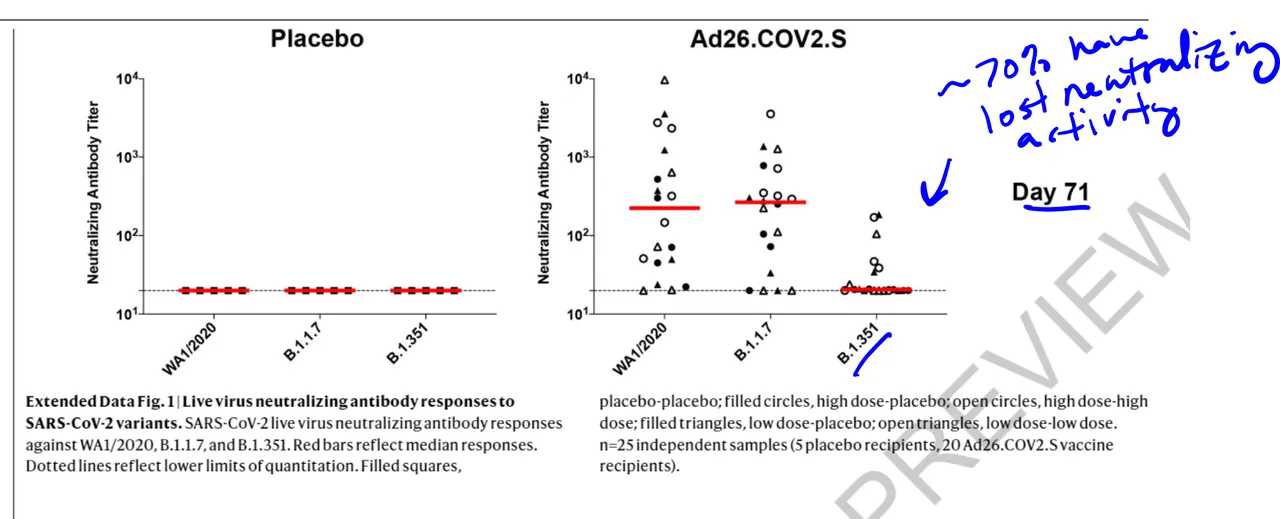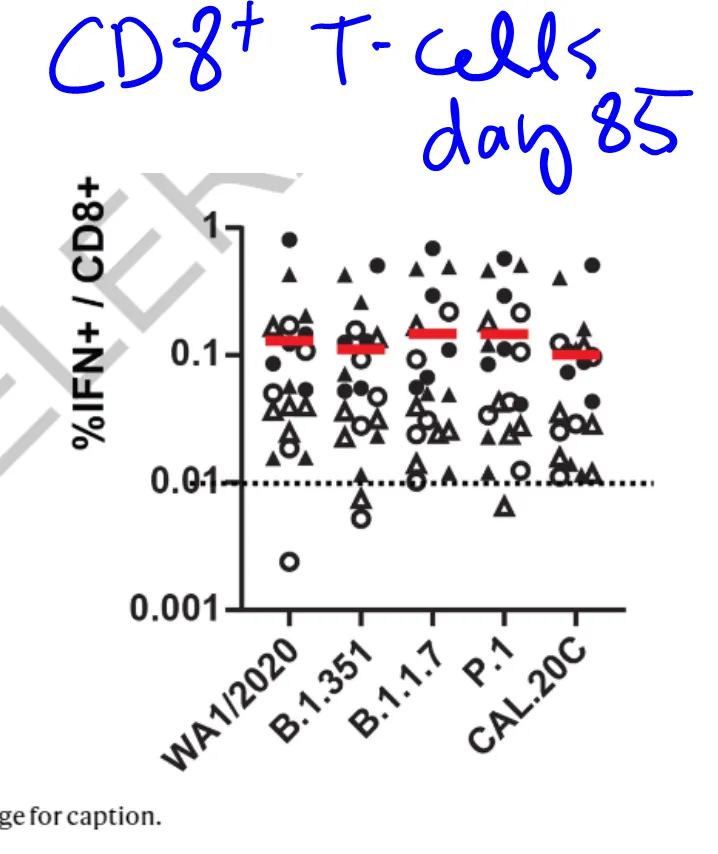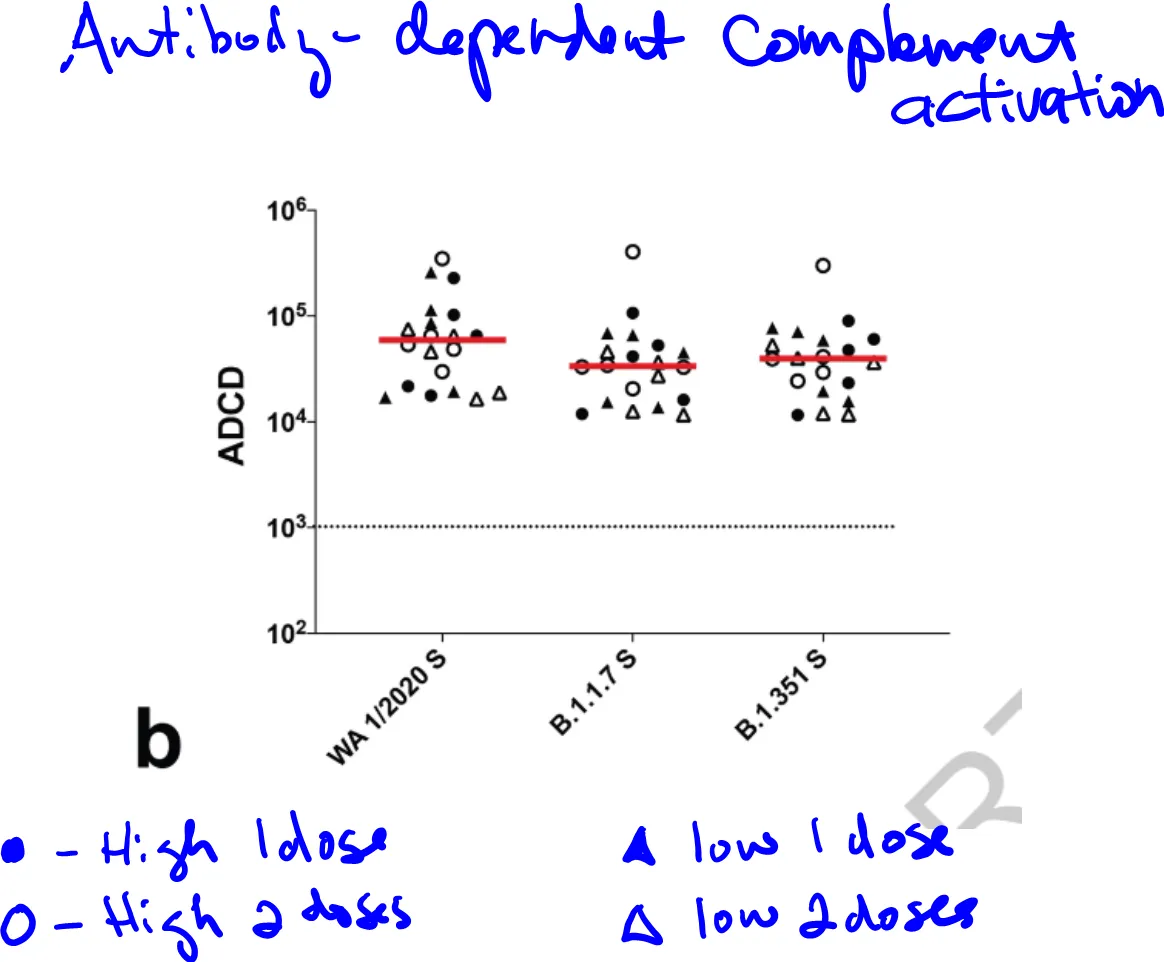
Of interest to those who got J&J, an update on the people in the phase 1/2 trial was released yesterday.
This early trial was a dosing study, so not everyone got the same dose as the one that eventually was released to the public. Some got a higher dose, and some got two doses (of either the higher or lower dose).
Twenty people returned to provide blood samples, which were tested pretty thoroughly, moreso than we've seen for the other vaccines. This produced some really interesting data.
A similar study of Moderna trial participants found that at six months, about half had lost neutralizing activity against the B.1.351 (beta/SA) variant. The J&J study found that at day 71, about 70% had lost neutralizing activity against this variant, and most of those who hadn't were those that got two doses. This isn't very surprising, as a single shot of J&J doesn't give the high levels of antibodies we see with the RNA vaccines.
About 80% still had neutralizing activity against the older variant and against B.1.1.7 (alpha/uk).
They also looked for CD8+ T-cells. There has been a lot of hope placed on CD8+ T-cells as a mechanism for getting around the variants, since they are not so dependent on the original spike structure. At day 57, all 20 still had detectable levels of CD8+ T-cells, even against the variants. Unfortunately, by day 85, some were starting to fall below the threshold of detection. For the B.1.351 variant, two of the 20 were undetectable, and a third was very low. Interestingly, both of the undetectables had two doses of vaccine. This doesn't surprise me at all. T-cells are great, but it's generally more difficult to get a broad, lasting CD8+ T-cell response than it is to get a broad, lasting antibody response.
Of course, most people still had some CD8+ T-cells at day 85, and some had high levels. So that's likely to be helpful in turning an infection into a mild or asymptomatic case. T-cells can't prevent infection, however.
But the data does get better from there.
My favorite part of this paper is that they looked for antibody function beyond just neutralization. I've written before that this is something that has not gotten enough attention. Neutralization is very sensitive to mutation because most neutralizing antibodies bind to the receptor-binding domain of the spike and block its binding to ACE2. If you mutate that one specific part of the spike, you lose a lot of the neutralization. But there are other ways that antibodies can prevent infection that don't depend on the antibody binding to one specific location on the spike.
One of those mechanisms is antibody-dependent complement activation. Complement is a group of proteins that can attack pathogens. Antibodies bound to the pathogen trigger these proteins to attach to the surface of the pathogen, and destroy it by poking holes in its surface. It doesn't require the help of live cells, but some immune cells can also see the complement proteins on the surface of the pathogen and eat or destroy the pathogen.
Antibodies from the 20 subjects all caused robust complement deposition on the surface of the B.1.351 variant. The decrease compared to the older variant is much less than what we see for neutralization, and it doesn't appear to matter whether someone had one dose or two, or the high or low dose. This seems like it makes for a better potential mechanism for lasting protection against variants as compared to CD8+ T-cells.
Another mechanism by which antibodies can prevent infection is through flagging the pathogen so that macrophages or neutrophils will eat it, or natural killer cells will kill it. These activities were not quite as robust against the variants, but still a lot better than what we see with neutralization.
The fact that the B.1.351 variant is not spreading rapidly in Europe, where it exists at a low level, suggests that there is more to immunity against it than just neutralization.
Link to study : https://www.nature.com/articles/s41586-021-03681-2.epdf

